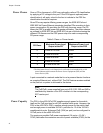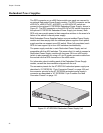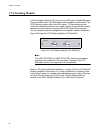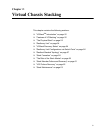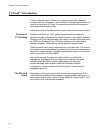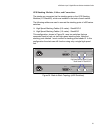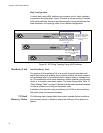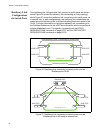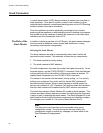
Chapter 2: Virtual Chassis Stacking
52
VCStack
TM
Introduction
A Virtual Chassis Stack (VCStack) is a group of physically separate
switches that are connected so as to function as a single logical switch. In
order to function as a VCStack, its component switches are connected
using high-speed stacking links.
Switches must be of the same product type to exist within the same stack.
Features of
VCStacking
Creating a VCStack (or VCS) greatly eases network management,
because you can configure all the stacked devices via a single IP address.
Creating a VCS will often eliminate your need to configure protocols such
as VRRP and Spanning Tree. VCS also enables you to create highly
resilient networks. This resiliency can be applied in several ways.
Within the stack itself, switch interconnection is via two links. The second
link is able to provide an alternative data path, thus the stack continues to
function if a single link fails. Degraded performance might occur however,
due to the reduced VCS bandwidth.
User ports can also be made extremely resilient by utilizing link
aggregation. Aggregated links can span ports, modules, and even
switches within the stack. Creating aggregated links that span
multiple switches within a stack creates an extremely resilient
configuration. Communication will still exist even if a switch and its
aggregated ports fail.
The Physical
Stack
Depending on the switch types used, a stack can comprise from 2 to 4
individual stack members interconnected via high speed stacking links. A
stack always has a primary stack member called the “stack master”, and
can contain up to 3 other stack members.



